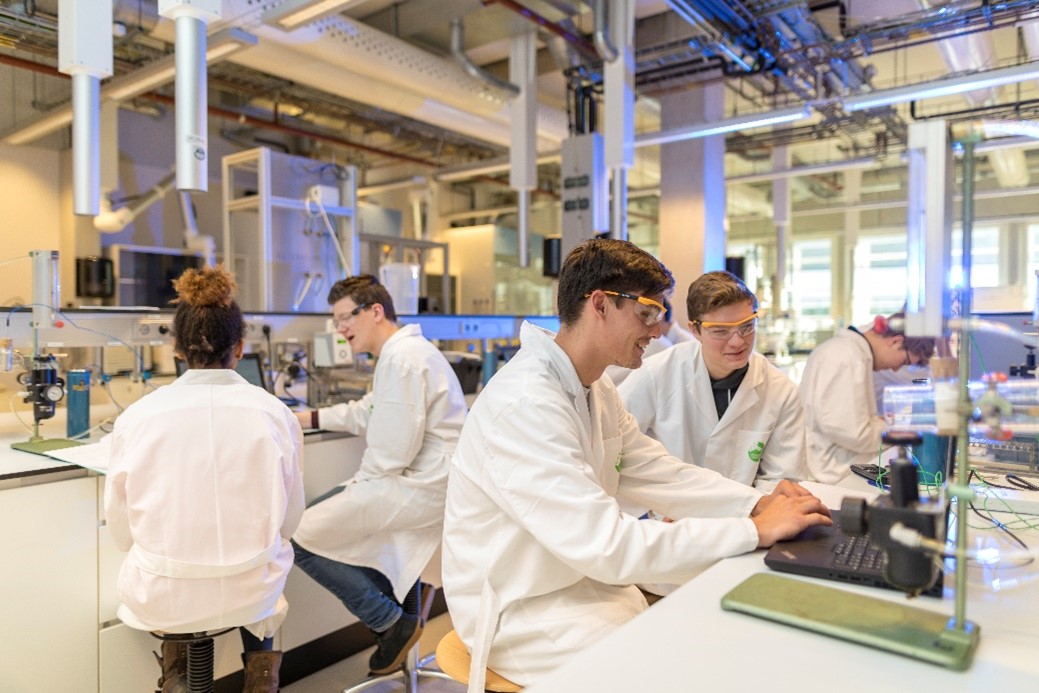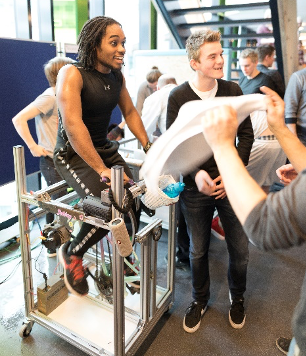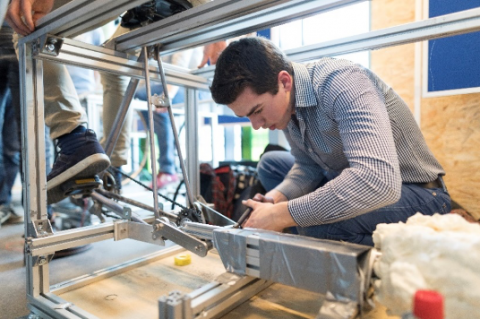Module 2 (Thermodynamics)

In the Thermodynamics module students learn about what happens when you heat multi-particle systems and about thermodynamic cycles, using the laws of thermodynamics. The knowledge that the student will acquire, is used in the project where students will build their own cooling device.
Subjects Module 2
In our daily lives, we are familiar with systems that contain many particles. For example, to boil a small kettle of water you need to heat up some 10^25 water molecules. In order to describe the behaviour of such a multi-particle system, it is impossible to consider each individual particle (microscopic approach). We look at a continuum or a macroscopic behaviour. When a large number of particles are considered as a system, the macroscopic properties such a pressure and temperature does not depend on the individual microscopic events. For instance, a gas will always expand when it fills a larger volume, but the reverse process will never occur spontaneously. This kind of behaviour and the underlying principles are considered in thermodynamics. Linking this module component to the project case, thermodynamic cycles will be considered such as engines and heat pumps. Here, the first and second laws of thermodynamics are of crucial importance (respectively, dealing with conservation of energy and increasing entropy).
This course focuses on three topics:
- Sequences, series and summations: How to define sequences and series and to consider the convergence of infinite sequences and series, using different tests for convergence and approximation errors.
- Integration: Integration in the context of areas under curves and use of Riemann sums to determine definite integrals from the first principles. Study of the Fundamental Theorem of Calculus and the use of some integration techniques such as integration by or substitution and integration by parts.
- Three dimensional geometry: space curves and surfaces. Parametrising space curves, finding arc lengths, determining the intersection of surfaces as curves. Understanding the existence of limits of two variable surfaces and defining continuity. Families of level curves, tangent planes, directional derivatives and optima. Closed off with Taylor series in two variables and Lagrange multipliers.
In the practical experiments issues are introduced such as formulating hypotheses, translating a problem into measurable variables, carefully planning an experiment, etc.. In conducting the experiments, a number of technical methods and experimental skills are taught. In many of the experiments the computer is used for data processing and analysis. By documenting the work in a structured log book, a systematic research approach is developed. Further topics are error analysis, statistical analysis of data, basic programming skills and processing experimental results using Matlab software.
The project aims at applying the material taught in Thermodynamics in a practical case. The students get an assignment that has to be completed in groups of typically 6 students in the short period of only 9 weeks of the module. Apart from thermodynamics also finite element modeling and systematic design are important in this assignment. At the start of the module a lecture and a tutorial are given on systematic design. Furthermore, finite element modeling will be considered in lectures and practical instructions. The information presented in these lectures on design and finite element analysis will not be assessed in exams. It should be applied in the project and is assessed as part of the project. In the last two weeks of the module, the project is closed by a report, a presentation fair, and an oral elucidation on the report.

Thermodynamics and lab practice
In module 2 the theory of thermodynamics is applied in the labratory
Refrigerator Race
To finalize the project of module 2 the students, in collaboration with Applied Physics, showcase their self-made fridge. The students compete in a race to cool down a specific amount of water as fast as possible (see video below)

Self-powered
Essential part of the project is to provide the energy to the system yourself

Deadline day
Optimizing the setup to perform as good as possible
